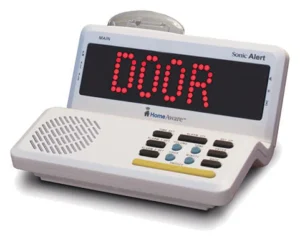The Communication Strategies When Living with Hearing Loss
Good communication strategies can help people with hearing loss stay connected and avoid feeling cut off from others. For millions dealing with hearing problems everyday talks like dining out or work meetings can get tricky.
But learning the right ways to communicate turns these tough situations into ones you can handle. You can improve your daily chats by setting up your space well, using tech tools, and figuring out what works at your job.
This full guide looks at real-world communication tips to help you keep strong ties with family, friends, and coworkers while coping with hearing loss. We’ll talk about how to set up your surroundings for the best results and build a support system that gets what you need.
1. Understanding Your Communication Needs

Your path to handling hearing loss well begins with a deep grasp of your specific communication needs. A simple hearing test can’t show all the complex hearing issues you might face. Also, each person struggles in various listening settings.
a. Spotting tough situations

Knowing where you struggle helps build good communication plans. Airport or station announcements often cause big problems because you can’t see who’s talking. Also dark places make things harder since you can’t read faces or lips well.
It’s worth noting that group settings bring their own issues. Many people who don’t hear well find it harder to follow talks when lots of folks speak at once with noise in the background. Social events can be tough because:
- Restaurant chats with loud background noise
- Team meetings where speakers often change
- Social gatherings in dim spaces
- Public areas with echo or reverb
b. Checking your hearing habits

To understand your hearing habits, you need to look beyond just volume problems. When you have hearing loss, your brain takes longer to process words often needing extra time to make sense of partial sentences. This extra brain work can make you tired from listening during long talks or meetings.
How well you hear speech changes a lot in different places and can’t be guessed just from regular hearing tests. For example many people who use hearing aids still find it hard to understand speech in noisy places relying on visual clues like facial expressions and lip-reading to get what’s being said.
To check your hearing patterns, watch for specific signs. These might include trouble following phone calls, issues understanding certain consonant sounds, or more difficulty hearing when you’re tired or under stress. Also, your hearing might change throughout the day when you’re stressed or fatigued.
Knowing these patterns helps you create targeted communication strategies. For instance, if you notice you understand better in well-lit areas or when you’re facing the person speaking, you can set up your surroundings to match. Also, knowing when your hearing is at its best can help you plan important talks or meetings for those times.
2. Setting Up Your Environment for Success

Setting up the right environment has a big impact on how well people with hearing loss can communicate. A well-thought-out space can make it much easier to understand speech and reduce how tired people get from listening.
a. Lighting and seating arrangements

Good lighting is key to effective communication. Even and balanced lighting throughout the room helps people read lips and see facial expressions better. , if you sit so that light shines on the speaker’s face instead of making shadows or glare, it makes visual communication clearer.
Seating arrangements should stick to certain rules to get the best results. Sitting 1-2 meters from the speaker works well, since each meter makes the speaker sound 6 dB quieter. Also circular or U-shaped seating lets everyone see each other, which helps people who need to read lips and watch facial expressions.
b. Managing background noise

Background noise causes big problems for people with hearing aids. New hearing aids use digital signal processing to spot and lower background noise. On top of that directional microphones pick up sounds from different directions and process them . This allows the device to focus on sounds from the front while reducing those from the sides and back.
All in all, to create a hearing-friendly space, you should:
- Switch off unneeded noise sources like TVs or radios when they’re not being used
- Put in soft furnishings and surfaces to cut down on echoes
- Shut windows to keep out outside noise
- Pick quieter spots for key talks
c. Using visual aids

Visual aids play a key role as communication tools. Visual signaling devices can let people know about important sounds through blinking lights for phones, doors, alarms, and baby monitors.
Also, captions on TV screens help viewers follow both the words and action at the same time.
A clean visual space helps people focus on key communication signals. Busy visuals, like patterns or moving images, can make it hard to read lips and understand sign language. Round dinner tables are great for lip reading and signing because everyone can see each other’s face and hands clearly.
3. Digital Tools for Better Communication

New digital tech has brought powerful tools that make daily talks easier for people with hearing problems. This tech offers fresh ways to solve issues in both personal and work chats.
a. Speech-to-text apps

New speech-to-text apps serve as useful talk helpers for quick casual chats like ordering food or asking for help in shops. Right now, a few apps stand out because they work well and have special features.
Otter.ai gives users 600 free transcription minutes each month. It’s good at turning speech into text and can tell different people apart when they talk. You can even add special words and names to help it understand better.
Google Live Transcribe is great at focusing on people talking close to your phone. It also shows you when there’s music or laughter in the background, which helps you know what’s going on around you. You need the internet to use it, but it can write out what people say in real-time in 70 languages.
Here are some things you’ll find in many speech-to-text apps:
- Offline mode for areas with poor signal
- Changeable font sizes to improve readability
- Support for multiple languages
- Options to flip the screen for face-to-face talks
b. Video calling features

Video chat platforms have become key tools for remote communication. These platforms now include special features for users with hearing problems making online meetings easier to join.
Microsoft Teams and Zoom provide auto-captions that show up on screen as people speak. While these captions might not be as accurate as professional transcripts, they help in casual meetings where formal communication support isn’t needed.
When it comes to crucial meetings those dealing with sensitive info, speech-to-text reporters offer more precise transcripts. These skilled professionals rely on special tools like phonetic keyboards to create instant transcripts that are more accurate than computer-generated ones.
To keep your hearing safe during video calls, experts suggest:
- Turning the volume down to the lowest level where you can still hear
- Taking regular breaks between calls
- Using noise-canceling headphones if you’re in a noisy place
Most video call platforms have extra features to help everyone join in, like chat options and screen sharing. These tools work alongside live captions to make sure everyone can follow along and take part in online meetings.
4. Workplace Communication Strategies
Your career success depends on how well you communicate at work when you have hearing loss. Good strategies help you join meetings, write clear messages, and work well with your coworkers.
a. Meeting participation techniques

Getting ready is key to doing well in meetings. First, tell the people running the meeting how you prefer to communicate and what help you need. Ask for meeting materials so you can learn the content and words.
For meetings in person where you sit matters for understanding. Sit where you can see everyone’s face in the middle of the table or with your better-hearing ear towards most speakers. Think about these key meeting tips:
- Ask for an agenda and presentation materials beforehand
- Show up to get the best seats
- Tell speakers to use microphones if they’re available
- Make sure there’s good lighting for lipreading
- Ask that one person talks at a time
For online meetings, turn on captions and check that your internet is stable. Then, let everyone know they need to speak and look at the camera. Keep microphones muted when not talking to cut down on background noise.
b. Tips for emails and messages

Digital platforms for communication have clear benefits for workplace interactions. These days, email and instant messaging provide a written record of key information, which helps avoid misunderstandings. When you use these tools, keep things professional while making sure your messages are easy to understand.
written communication helps check key details numbers or technical terms that might be hard to hear . Use chat features during online meetings to clear up points or ask questions without stopping the talk.
c. Working with colleagues

To build good relationships with coworkers, you need to be open about your needs. So, tell them how you like to communicate and what helps you work well. This openness helps create a welcoming workplace and stops mix-ups.
When you’re on a team, set up clear ways for others to get your attention, like a light tap on the shoulder or a wave. No matter what’s going on, keep things professional while standing up for what you need.
For team projects, use visual aids and written records to make sure everyone understands. Think about making these changes at work:
- Put your desk in a quiet spot
- Ask for written notes from key talks
- Use apps that turn speech into text for quick chats
- Set up regular meetings with team members
In the end good workplace communication depends on creating a space where you and your coworkers feel at ease sharing needs and finding answers together. Keep in mind that most workplace changes are easy and cheap to make, so employers can provide them.
5. Building Your Support Network

Solid support systems are the foundation of effective communication for people with hearing issues. Setting up these relationships takes careful planning and getting involved with both family and friends who get what you’re going through.
a. Family communication plans

Making good family communication strategies begins with everyone understanding each other and knowing what to expect. Family members should realize that hearing aids help, but they’re not perfect fixes. First and foremost, this knowledge helps avoid annoying remarks like “You hear when you want to!” which can hurt relationships.
Good family communication depends on a few key things:
- Talking up close and in person, not yelling across rooms
- Setting up good spots to chat with enough light
- Taking turns to speak and staying involved
- Saying what you need and making sure others get it
- Writing down key info like dates and times
Along with these tips, families should set up clear ways to talk. For example, getting someone’s attention before speaking and looking them in the eye helps get the message across. Instead of picking fights, families should try to make everyone feel at ease when sharing their thoughts.
b. Finding peer support groups

Even the most sympathetic family members might not understand the everyday struggles of hearing loss. This makes it crucial to connect with others who face similar issues. Support groups bring unique advantages that work alongside family support, which is key to remember for anyone dealing with hearing loss.
These groups offer more than just emotional backing. In short, they serve as helpful resources to:
- Trade practical tips for coping
- Talk about experiences with hearing aid tech
- Find out about new communication tools
- Learn how to stand up for yourself
- Make real friends
Unlike feeling alone, support groups give people a sense of community and empathy. Many organizations provide different ways to connect, from local chapter meetings to online groups. The Hearing Loss Association of America runs support networks across the country, along with other groups like the Association of Late-Deafened Adults.
To find the right support group, you need to check out several options. Local groups often get together at community centers or churches, while online communities let you access support anytime. The Say What Club, for instance has email lists and private Facebook groups so you can get help whenever you need it.
Support groups often hold educational workshops with audiologists and other experts who tackle specific challenges and offer solutions. These sessions give people a chance to learn about new tech, ways to communicate, and how to cope in a friendly setting.
Conclusion

Living with hearing loss brings unique communication hurdles, but mastering good strategies turns daily talks from frustrating to doable. Knowing your own hearing patterns setting up the best environments, and using digital tools lay the groundwork for talking well.
Success at work depends on clear rules and open chats with coworkers about what you need. Taking part in meetings communicating online, and building strong work relationships make moving up in your career possible even with hearing challenges.
Family support and peer connections have a crucial impact on keeping communication skills strong. Support groups provide key resources handy tips, and real friendships with people who face similar challenges. These bonds help build confidence and self-advocacy skills while giving emotional backup during tough times.
Keep in mind that dealing with hearing loss takes patience, practice, and the right mix of methods that fit your unique situation. Little changes in daily habits, along with new tech and solid support networks, let you join in all parts of life. Above all, staying close to family, friends, and coworkers helps keep the rich social ties that give life meaning.

